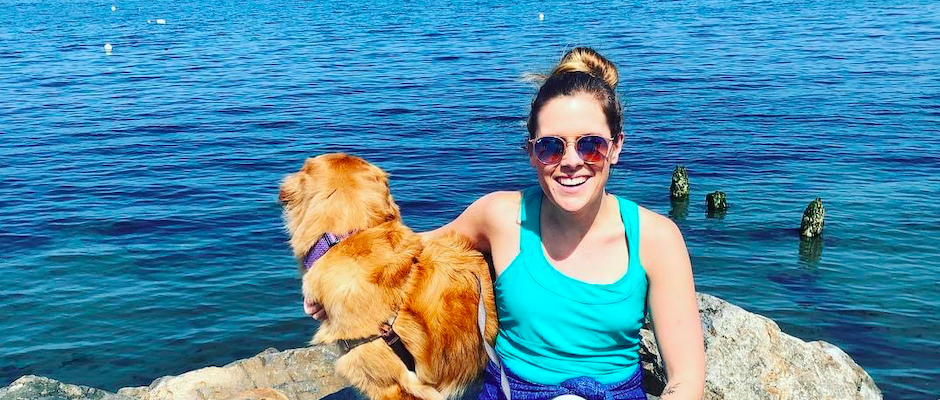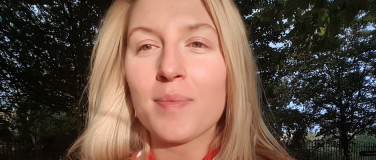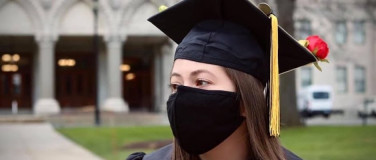
Endometriosis. I was 25 years old the first time I heard the word. I was about 10 days into a pain flare that I had no explanation for. My gynecologist had scheduled me for an ultrasound a few days later. In the few days that followed, I Googled and read all about it. I suddenly knew I had an answer to my pain—I had to have endometriosis!
Later that week, I went in for the ultrasound. I wriggled in pain while the technician maneuvered the probe around, seemingly unphased by the discomfort she was causing me. For the first time I nervously spoke the word to a medical professional. “Could I have endometriosis?” I meekly asked her. She looked at me and shook her head, still twisting the probe inside me. “No,” she said. “If you had endometriosis, I’d be able to see it right now.” Later that day, my doctor called and said everything looked perfect. “You must be having a muscle spasm,” she told me, and prescribed muscle relaxants. A week later my pain went away. It had happened before, so I found it hard to believe it was a muscle spasm, but I chalked it up to a fluke.
A year prior to this, I had a similar flare. My gynecologist at the time took a swab, told me I had chronic yeast, and said that’s what caused my cramping. She put me on a three month course of antifungals. I’d never heard of endometriosis at the time, and I believed her.
When I take it all the way back, my problems started with my first period. I bled extremely heavily for 10-14 days every month. I would miss school because of the pain. I would faint all the time. I would leak through three pads, two layers of clothing, and a towel at night. After many cycles, my mom was concerned that this was not normal, and took me to a gynecologist.
At thirteen years old, this gynecologist agreed that my symptoms weren’t normal. She ran a slew of tests and put me on birth control, which I have been taking ever since to tame my symptoms. I’m now thirty.
I bounced between different birth controls and different doctors for the next sixteen years. Throughout my twenties, I brought up my pelvic cramping, painful periods, and worst of all, debilitating fatigue, with every doctor I saw. The pain used to be relatively infrequent, and usually only occurred when I was on my period, so it didn’t control my life. The fatigue was the symptom that controlled my life. From the age of 25, I asked every doctor about it, and every one of them ran thyroid tests, vitamin tests, and metabolic panels, all of which came back normal. I would tell them, “I just don’t feel like a healthy twenty something-year-old woman.” Each one told me I was healthy as could be, and I felt like a hypochondriac. Not one of them ever thought it could be endometriosis.
At 29, the fatigue wasn’t my biggest problem anymore, as my pain came on like a tidal wave. I was walking my brother’s dog one day and I rushed inside with an excruciating bout of cramps that put me in the fetal position for hours. I was crying, confused, and contemplated going to the ER. It subsided, but little did I know it was the beginning of the most painful year of my life (it was 2020, after all, so par for the course).
From that point on, I began having similar pain episodes about once every week or every two weeks. These progressed to once or twice a week to three or four days a week. Eventually, I had pain every day. Some days it was mild, some days it was intense, but it was daily nonetheless. My symptoms also expanded from cramping. I started having severe sharp pains before emptying my bowels that would make me cry out. I started having vaginal spasms. I started experiencing a deep ache that no amount of heat or Tylenol could relieve. Sometimes this pain was triggered by sex, sometimes it began for no reason at all. It became common for me to cry “I can’t reach it” when referring to my pain. It’s the only way I could put it into words. I could not reach it. My belly bloat became constant, and I looked pregnant most days (I’m talking second trimester pregnant).
But I persisted—and luckily, my primary care doctor listened. She told me, “I think you have endometriosis.” I was so relieved that someone finally believed me. She referred me to a gynecological surgeon who performed laparoscopy on me. Low and behold! He found nothing. No endometriosis. Despite the fact that I did have adhesions all throughout my abdomen, behind my uterus, covering my sidewalls, bowels, and appendix, he told me there was no endometriosis. “In a few weeks, you should be good as new!” he told me with a smile. He was extremely confident about this, and was convinced that the adhesions had caused my pain. I wanted to know why I had these adhesions to begin with, because I knew that endometriosis can cause adhesions. He brushed this information off and told me I must have had an infection at some point, probably appendicitis. If I kept having problems, he said I should see a general surgeon to get my appendix out.
I wanted him to be right. But deep down, I knew from that very first conversation in the recovery room that he was not.
As my recovery progressed, and I should have been getting better, I continued to get worse. My pain escalated and I had constant throbbing cramps in my uterus every single day. I spent the summer doped up on painkillers. I started developing “toasted” skin from my heating pad use.
Luckily, I had made an appointment months prior with a specialist, and I counted down the days until that appointment came in October. The surgeon told me she was sure I had endometriosis, as well as adenomyosis, which is a disease of similar type growths into the muscle wall of the uterus.
She scheduled me for surgery six weeks later.
November 24th, one week before my thirtieth birthday, I had excision surgery. There was endometriosis everywhere. My pelvic sidewalls, uterosacral ligaments, front and backside of my uterus, my bladder, and my ureter were all involved. There were splatter stains inside me from burst ovarian cysts. I had fourteen lesions removed from my abdomen. My uterus was boggy and tender, backing up my surgeon’s suspicions of adenomyosis (which can only be cured with a hysterectomy). She excised all the endo, and removed a three centimeter bundle of nerves to help with my uterine pain. She also removed my appendix as it was covered in fibrotic tissue.
My endometriosis lesions were clear and looked like blisters. It took a true specialist to manipulate and examine the tissues the right way to see the disease. I still wake up and feel a slew of emotions about it every day: thankfulness for my doctor, yet also deep fear for women’s healthcare across the world given that most general gynecologists are not skilled enough to see disease that looks like mine.
I am one of the lucky ones. Millions of women live in insufferable pain for years and years. Millions are told they are healthy. Millions are told it is in their heads. Millions are given “normal” test results, time and time again, and sent home with a little less hope than the day before.
Even for those of us who are fortunate to get proper treatment, this disease is an uphill battle. I still face pain every day, and I know it’s likely that will never fully go away. I still face the reality that a hysterectomy is the only way to rid my body of a diseased uterus, and that is extremely saddening deep in my soul when I let myself think about it. I have
daily anxiety about whether I’ll be able to conceive children when I am ready to do so with this imposter in my belly. But it does no good to worry about it now, and I’m doing all I can in the meantime with a care team who is on my side. A care team who is fiercely devoted to battling the monster inside me.
Endometriosis has taken so much from so many. I dream of a day when teaching about endometriosis is a priority in the medical community so women do not continue to suffer in massive numbers from a disease that is treatable.
I take great comfort in knowing I am not alone. I am in the company of some of the strongest women in the world. We are warriors of an invisible disease. And I am proud to share my story.
Hannah grew up in Edmonds, WA. After living in Los Angeles for nine years, and beginning her financial services career there, she eventually relocated back to the Pacific Northwest to be near her family. In her spare time, Hannah enjoys hiking, jogging, and inventing new recipes. Like many, Hannah suffered from endometriosis for over a decade before receiving proper treatment. She is passionate about spreading awareness for endometriosis, and hopes that one day, the word will be one that most people recognize in conversation.
Editor's note: Would you like to contribute to EndoStories? Click here to learn how to submit your work.
*Patient stories submitted to EndoFound.org are the views of the patient and not necessarily those of the foundation. All testimonials are from real patients, and may not reflect the typical patient’s experience, and are not intended to represent or guarantee that anyone will achieve the same or similar results.









